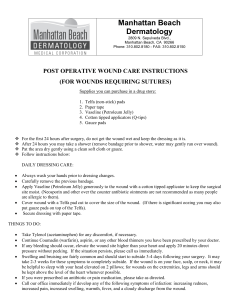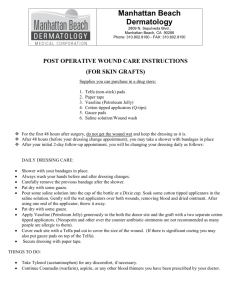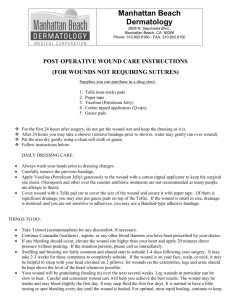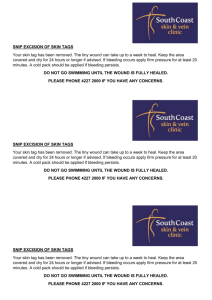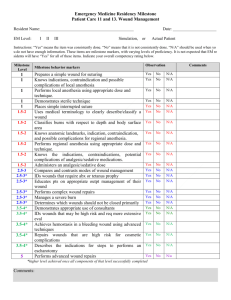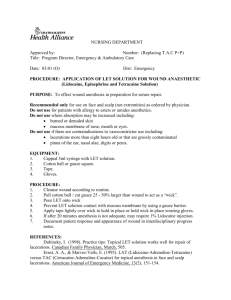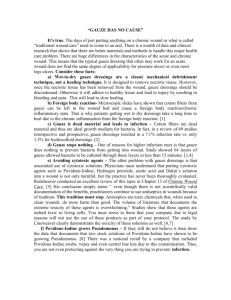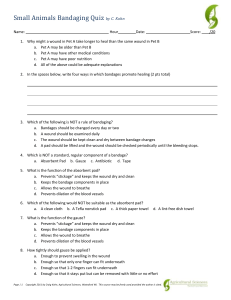Cryosurgery/ Liquid nitrogen Wound Care
advertisement
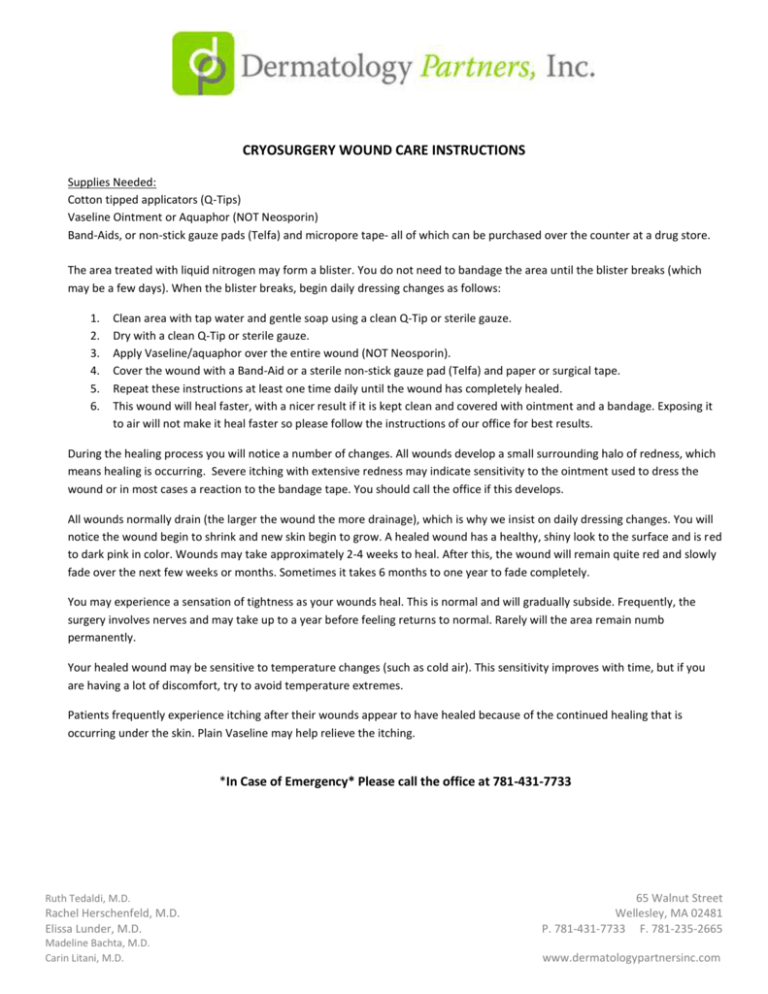
CRYOSURGERY WOUND CARE INSTRUCTIONS Supplies Needed: Cotton tipped applicators (Q-Tips) Vaseline Ointment or Aquaphor (NOT Neosporin) Band-Aids, or non-stick gauze pads (Telfa) and micropore tape- all of which can be purchased over the counter at a drug store. The area treated with liquid nitrogen may form a blister. You do not need to bandage the area until the blister breaks (which may be a few days). When the blister breaks, begin daily dressing changes as follows: 1. 2. 3. 4. 5. 6. Clean area with tap water and gentle soap using a clean Q-Tip or sterile gauze. Dry with a clean Q-Tip or sterile gauze. Apply Vaseline/aquaphor over the entire wound (NOT Neosporin). Cover the wound with a Band-Aid or a sterile non-stick gauze pad (Telfa) and paper or surgical tape. Repeat these instructions at least one time daily until the wound has completely healed. This wound will heal faster, with a nicer result if it is kept clean and covered with ointment and a bandage. Exposing it to air will not make it heal faster so please follow the instructions of our office for best results. During the healing process you will notice a number of changes. All wounds develop a small surrounding halo of redness, which means healing is occurring. Severe itching with extensive redness may indicate sensitivity to the ointment used to dress the wound or in most cases a reaction to the bandage tape. You should call the office if this develops. All wounds normally drain (the larger the wound the more drainage), which is why we insist on daily dressing changes. You will notice the wound begin to shrink and new skin begin to grow. A healed wound has a healthy, shiny look to the surface and is red to dark pink in color. Wounds may take approximately 2-4 weeks to heal. After this, the wound will remain quite red and slowly fade over the next few weeks or months. Sometimes it takes 6 months to one year to fade completely. You may experience a sensation of tightness as your wounds heal. This is normal and will gradually subside. Frequently, the surgery involves nerves and may take up to a year before feeling returns to normal. Rarely will the area remain numb permanently. Your healed wound may be sensitive to temperature changes (such as cold air). This sensitivity improves with time, but if you are having a lot of discomfort, try to avoid temperature extremes. Patients frequently experience itching after their wounds appear to have healed because of the continued healing that is occurring under the skin. Plain Vaseline may help relieve the itching. *In Case of Emergency* Please call the office at 781-431-7733 Rachel Herschenfeld, M.D. Elissa Lunder, M.D. 65 Walnut Street Wellesley, MA 02481 P. 781-431-7733 F. 781-235-2665 Madeline Bachta, M.D. Carin Litani, M.D. www.dermatologypartnersinc.com Ruth Tedaldi, M.D.

